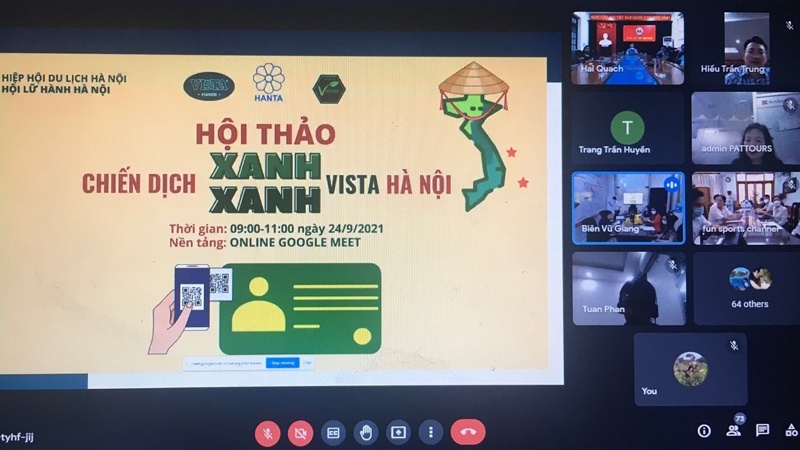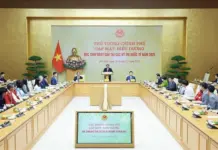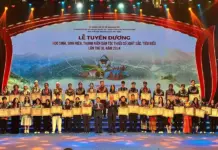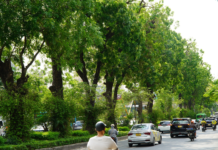Speaking at the webinar, Phung Quang Thang, President of the Hanoi Travel Association shared that the many continuous outbreaks of the COVID-19 epidemic have caused tourism to fall into a crisis of bottoming out. Recently, however, tourism has begun to see the “light at the end of the tunnel” with some localities having basically taken control of the epidemic and begun to have some tourism activities again. But, according to Thang, at this time, it is still necessary to identify the domestic market as the driving force for tourism development.
The Hanoi Travel Association has set forth the necessary criteria and conditions to develop safe tourism in the “new normal” situation, including ensuring a safe connection between tourists and workers in the field of tourism, among destinations and among services in the service supply chain for tourists.
President of the Hanoi Travel Association Phung Quang Thang speaks at the workshop. (Photo: Tien Dung)
In addition to regulations on vaccination requirements and negative PCR test certificates for tourists and tourism workers, it is necessary to have specific changes in the method of providing services to tourists at each stage, such as transportation, accommodation, restaurants, sightseeing at the destination, and providing self-contained tourism products.
In particular, it is necessary to have the participation of localities in providing a list of safe tourism service providers, while at the same time closely connecting to limit barriers in the process of moving between destinations.
According to Tran Trung Hieu, Deputy Director of the Hanoi Department of Tourism, said: The organisation of this workshop is an early and proactive step for travel businesses to be able to restore tourism activities. The title “green campaign” of the conference is also a criterion for tourism to develop in the direction of adaptation, safety, and effective control of the COVID-19 epidemic.
Recently, Hanoi and a number of other localities in the country have built tourist accommodation green spots, which are concentrated isolation facilities with fees for entry guests, with a green connection of travel – transportation – accommodation, and connections to electronic exchanges. This can also be seen as a reference model when deploying the upcoming safe and green destination models.
At the seminar, travel businesses also introduced a number of new tourism products to meet the requirements of safe tourism so that, on this basis, connections between localities and service providers can be facilitated, such as self-driving caravan tours, and bike safety tours.





